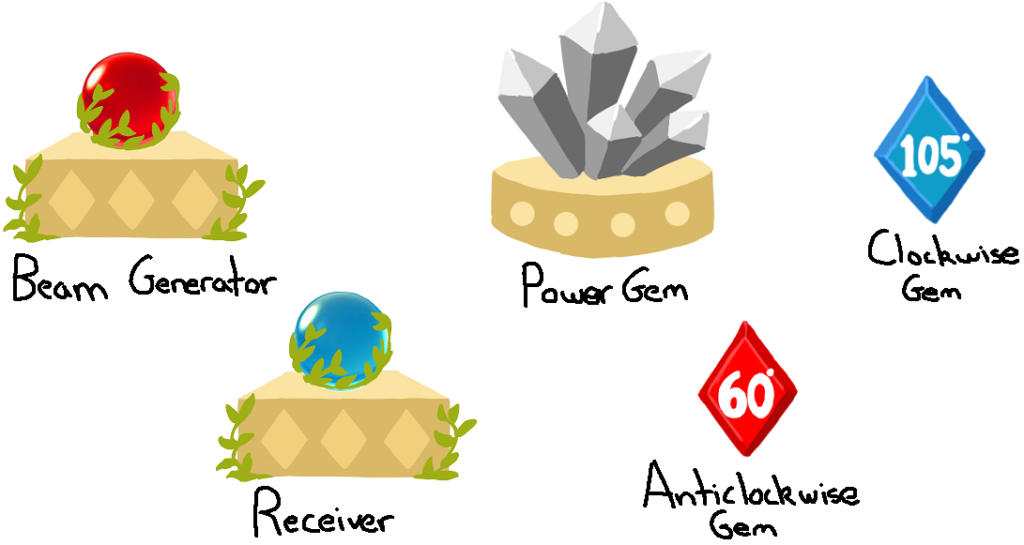Recently we have been working to create an educational game on angles. Part of that requires designing puzzles that try to provide educational value. The following blog post is a continuation of a look at our process.
Breakdown
The most important part when analyzing our puzzles was first to recognize our puzzle metrics. Initially these metrics were as follows:
- Mirror Numbers
- Number of slots
- Number of gems
- Gem Types
- Receivers

First Pass
We began our first pass using these metrics to craft the thirty puzzles that would form the core structure of our game. The process essentially boiled down to a table of each of these metrics listed in columns. We incrementally increased metrics until key climax moments which we referred to as ‘boss levels’. Following a boss level we dropped the metrics to allow for the introduction of a new system in a simpler environment.

Second Pass
Our first pass at developing the puzzles allowed us to create the initial structure of the experience. On further examination, points three and four actually had more depth to them. We broke these points into each and every gem value. This additional depth warranted further analysis.
We then went about constructing a meaningful method of presenting what we called ‘angle distribution’. Using this we mapped out each and every gem per level. This method of analysis revealed several levels that were problematic for different reasons such as:
- High angle overlap
- Had no garbage
- Levels that were similarly structured

These key points conflicted with our main educational objective of improving familiarity with both numeric and visual representations of angles. As for one having a large degree of similar angles meant that the exposure to different angle values in the 360 angle system was lower. So for our second pass we went about redesigning certain levels adding in garbage, and choosing angle gems carefully to avoid overlap.
Third Pass
On making a third pass at the we again found a problem. Our third pass took the form of playing the levels. What we found was some gems were included that were direct solutions to problems in hard puzzles.

We needed to weed out as though it is good that players are able to discern such a solution, we felt that doing so would mean engaging less with the angle gems in the level as several other gems were left out entirely in the solution. Thus we weeded such scenarios out during our third pass.
Conclusion
Essentially the process boiled down to a number of steps:
Analyze
- Carefully study the components within our structure
- Extrapolate areas for further fine grained analysis
- Develop a tool for analysis
Adjust
- Apply the tool
- Identify and address problem areas
- Replay the experience
- Repeat adjustment
Using this process we iteratively analyzed our puzzles redesigning when necessary to ensure levels had particular solutions to problems with minimal overlap. Now with a clear design process, all thats left to do is playtest and hope the design worked!